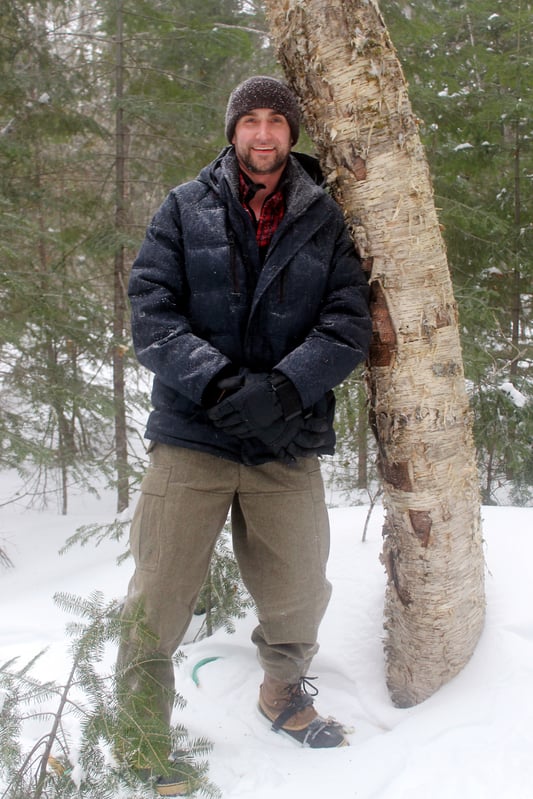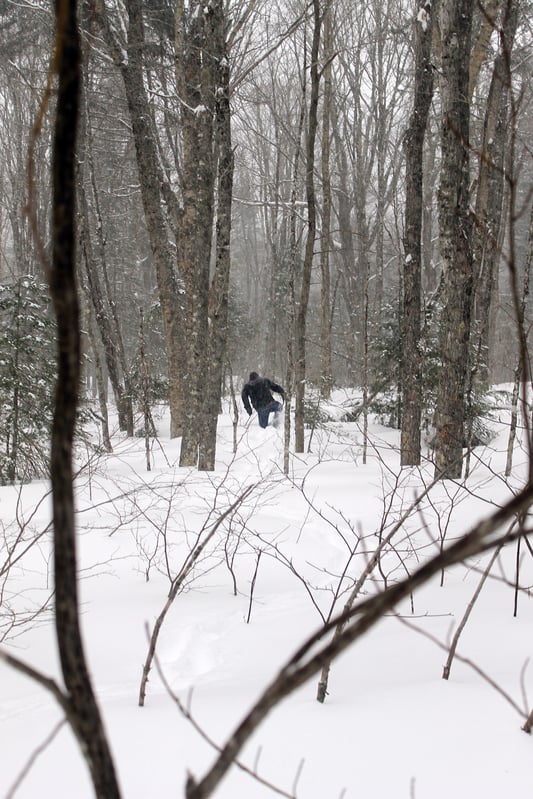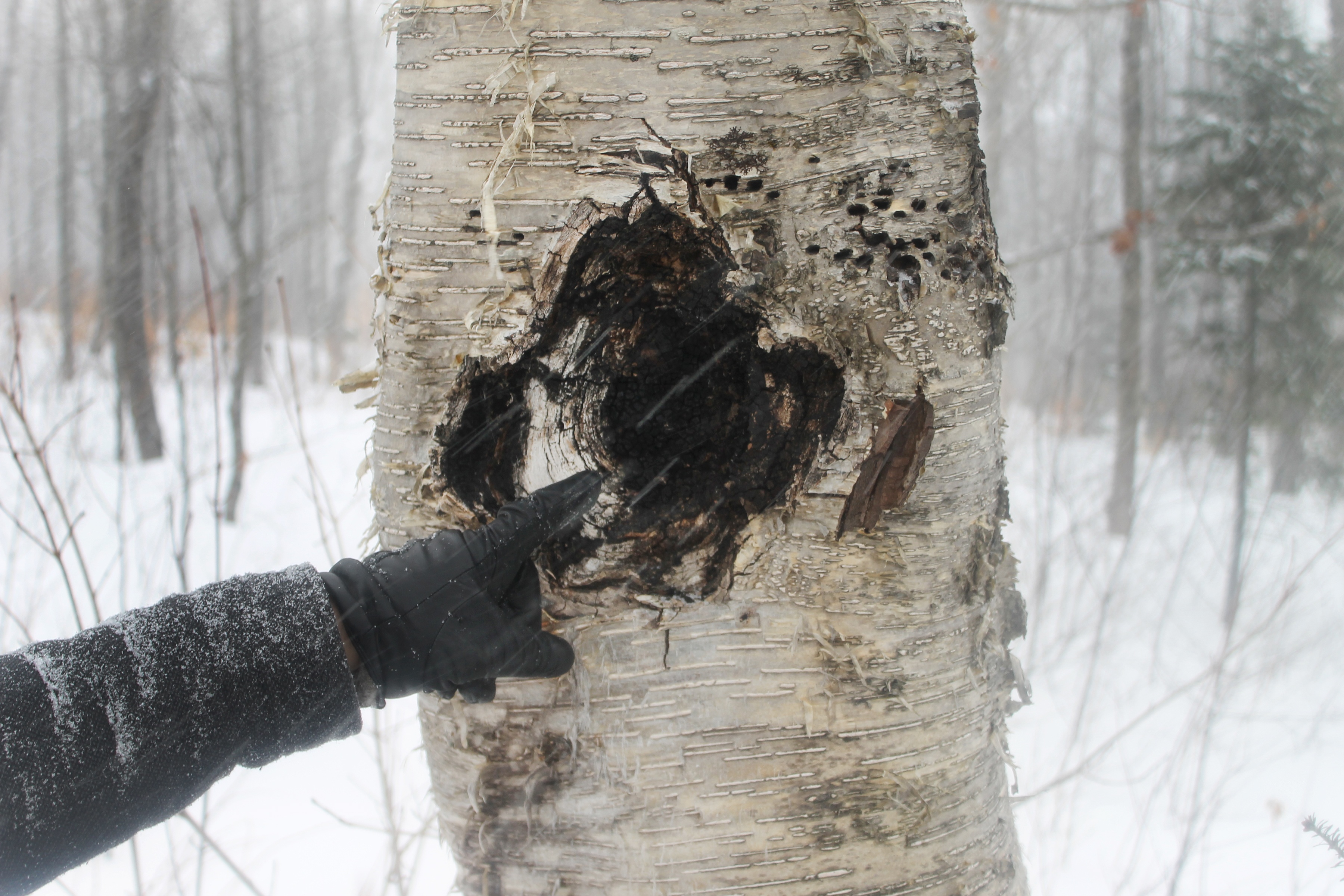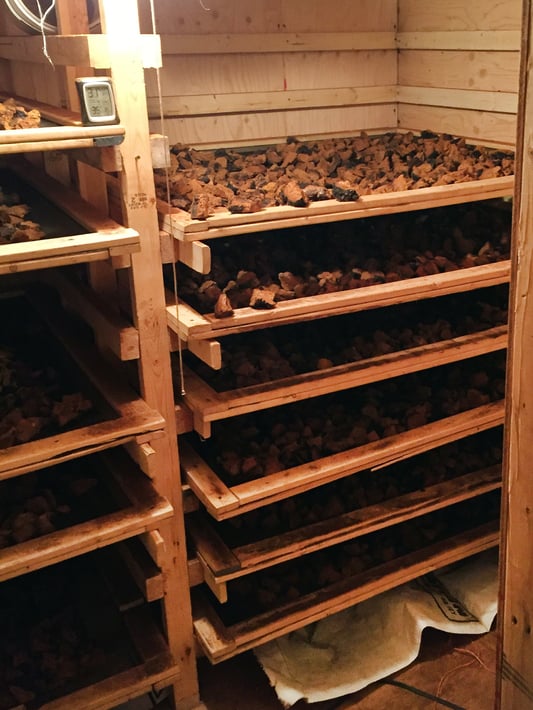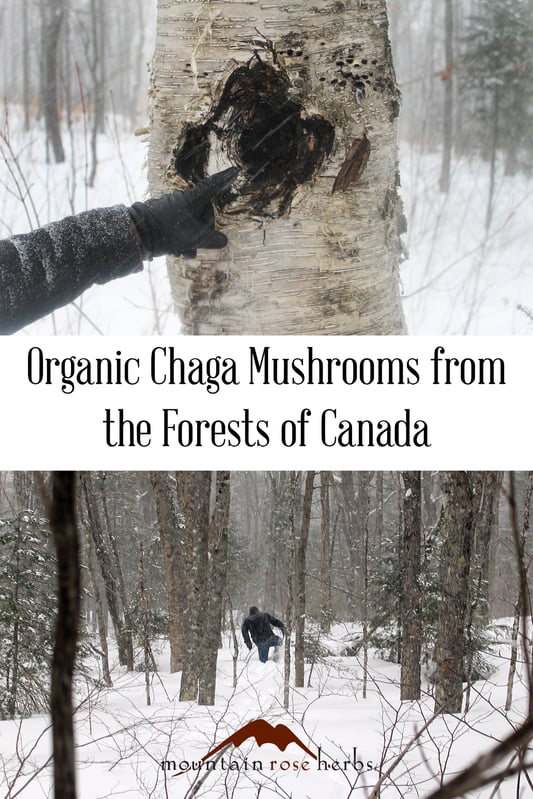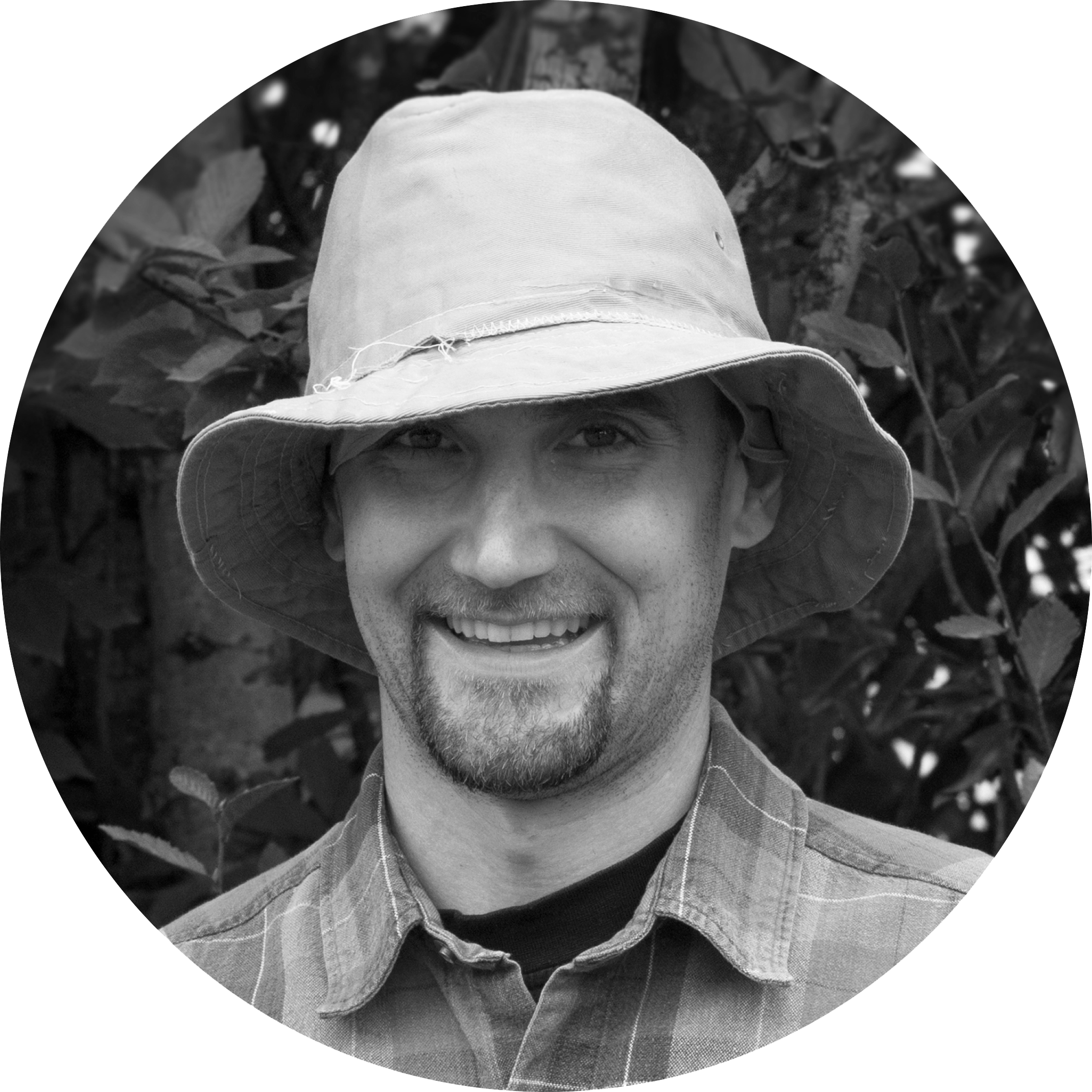Mountain Rose Herbs farm liaisons travel into Canada's north woods to visit the harvest sites of our certified organic, wildharvested chaga mushrooms.
The late January landscape of northeastern Canada is stunning, but brutal. This snow-covered expanse presents an imposing front that challenges all who would enter its wild recesses, but our local harvesters know this ground and hike on, undeterred. We follow behind, spurred onward by the promise of encountering an elusive and treasured resident of this hibernating land: Inonotus obliquus, the chaga mushroom.
Long prized by herbalists across the world—from the plains tribes of 11th century Siberia to the First Nations peoples of North America and beyond—chaga’s reputation as a powerful plant ally has endured through the centuries and retains its allure to this day. More and more people now look to chaga in decoction, extract, or powder form to support their wellness goals. In fact, chaga has become so sought after by modern natural health enthusiasts, its popularity has brought the importance of sustainable harvesting practices to the forefront—which is what brings us to a dark Canadian forest in the heart of winter.
I pause in my pursuit of chaga in its native habitat, a northerly birch forest where the mushroom makes its home.
One of the things that makes chaga so precious is its untamable nature. Like many other prized mushroom varieties, chaga grows only in the wild. This mysterious fungus infects the Betula genus of hardwoods (commonly known as birch) throughout the world’s boreal forests. Chaga grows as a sterile conk in naturally occurring tree wounds created by the ravages of winter; broken branches and cracks from water freezing and expanding create opportunities for airborne spores to enter and mature. When harvested properly, the fungus is cut from the tree without gouging into the wood, making it possible for the chaga to regrow to a harvestable size within five to six years (and slowing the rate at which the mushroom damages its host tree). The fungus can be harvested multiple times from the same site until the tree dies, at which point the chaga will also cease to grow and will spore out to start the next generation.
We trudge on through deep snow, our slow progress eventually compelling us to stop and strap on snowshoes to continue our trek.
Respect for our guides grows as we travel deeper into the frigid bush. We take refuge from the thickening snowfall in a maple syrup processing structure to retrieve proper gear before continuing our trek. After strapping on some snowshoes, we set out again on our search. Soon, we reach the harvesting grounds where these experienced wildcrafters source and protect the future of our certified organic chaga. Snow begins to fall as we venture into an area where chaga was harvested earlier in the season. To the trained eye, this seemingly desolate grove teems with the promise of renewal. We are pleased to observe signs of proper harvest techniques and regrowth all around us. Our guides point out new Inonotus conks regenerating from a previously harvested site, growing from the broken split crevasses of the yellow birch. Satisfied with our findings and fatigued from a long day in inclement weather, we return to the warmth and safety of our guide’s home for nourishment and stimulating conversation.
There are many reasons we choose to source certified organic chaga from these trusted harvest partners. Since chaga is rarely successfully cultivated, it is of the utmost importance that we know where and how the material is harvested. These crucial pieces of information enable us to enjoy the mushroom’s nourishing gifts with a clear conscience.
Our local guide points out a chaga conk regrowing at the site of a previous harvest. Proper harvesting techniques allow the mushrooms to regenerate at the same host site.
Unrestrained and untrained wildcrafting practices can endanger the future of both chaga and its wild habitat. Unskilled pickers will often harvest any conks they find, regardless of size, sometimes gouging deeply into the trees to extract as much of the mushroom as possible. Such reckless harvesting practices are likely to kill the mushroom, its host tree, or both in the process. In addition to environmental hazards, improper harvesting practices can also severely undermine the quality of the mushrooms they pass on to consumers. Harvest timing is crucial to getting the highest nutrient content in your chaga, but unregulated harvesters often collect chaga indiscriminately throughout the year. Additionally, without regulations or oversight, chaga may be dried and processed with impurities such as sap still intact, often in non-standardized temperature conditions that further increase the risk of molding and bacterial contamination.
On the other hand, harvesters who want to supply certified organic chaga are trained on and practice proper harvesting techniques designed to protect environmental and human health. Harvest guidelines are enforced by the body which administers the Canadian organic certification, Ecocert. In order to make this oversight feasible, harvests are restricted both geographically and seasonally. Our certified wildharvest partners work within a 60-miles radius surrounding Saint-Quentin, New Brunswick, allowing Ecocert to monitor the health of this ecosystem and adjust harvesting regulations as needed to protect it. Mushrooms are only collected during a narrow winter window, giving the conks time to mature throughout the rest of the growing season.
Harvested chaga conks are carefully cleaned and cut by hand, then dried in a controlled environment until they reach an approved moisture level for safe preservation.
Organic harvesting regulations also help optimize end product quality and safety for our customers. Chaga contains its highest concentration of the antioxidant melanin during the coldest months of the year, so harvesting conks only during in peak winter maximizes their nutritive properties. Similarly, since chaga becomes more nutrient-dense the longer it grows on a tree, only conks weighing six pounds or more are collected, while smaller ones are stored in a GPS device for future harvests. Organic quality control measures also extend to how the mushrooms are processed. After harvest, the fresh chaga is sorted and cut by hand, then dried in a small dehydrator at a low, consistent temperature (70° F) for about 72 hours until it reaches a safe humidity level for storage (at or below 8%).
Mountain Rose Herbs understands how crucial it is to protect this precious and powerful species, which is why we encourage our customers to treat this precious resource with respect it deserves, consuming it in moderation and choosing other, more abundant allies when appropriate. It’s also why we take the extra assurance measure of in-person field visits to our chaga harvest sites—even when we have to brave some snowdrifts to do it!
Want to Meet More of Our Organic Plant Partners?
Visit Our Organic Passionflower Fields in Italy!
You might also enjoy:
- Why Our Pacific Northwest Farms Grow Organic
- Protecting Pollinators with Organic Agriculture
- Reishi Mushroom Chai Recipe for Immune Support


